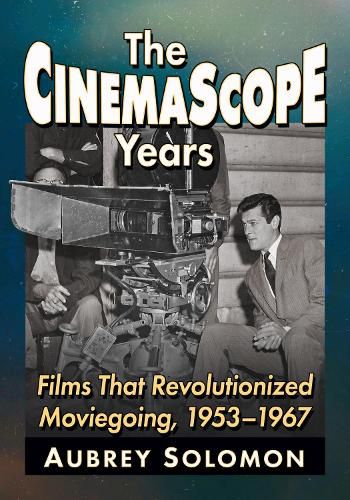Readings Newsletter
Become a Readings Member to make your shopping experience even easier.
Sign in or sign up for free!
You’re not far away from qualifying for FREE standard shipping within Australia
You’ve qualified for FREE standard shipping within Australia
The cart is loading…






Virtually every current widescreen movie, tv broadcast or streamed image benefits from the techniques that have evolved since the widespread adoption of the first practical use of anamorphic photography: CinemaScope. Wildly successful, CinemaScope with its huge screen and vividly panoramic images lured audiences away from their television sets and ended a sharp decline in moviegoing attendance. And yet, generations who grew up from the 1960s through the 1990s experienced these films in a completely disfigured format, sized to fit black-and-white television screens of the era.
Each chapter of this book, organized by genre, provides a first-time re-evaluation of the cinematic qualities of all 538 major studio-produced/financed films shot in CinemaScope. Presented as well are excerpted interviews with cameramen and directors who describe in detail the development and problems presented by widescreen production. Each title entry includes a brief synopsis including major cast members, an analysis highlighting the artistic values present or absent, and comments from critics and trade papers pertinent to the use of the wide screen process.
$9.00 standard shipping within Australia
FREE standard shipping within Australia for orders over $100.00
Express & International shipping calculated at checkout
Virtually every current widescreen movie, tv broadcast or streamed image benefits from the techniques that have evolved since the widespread adoption of the first practical use of anamorphic photography: CinemaScope. Wildly successful, CinemaScope with its huge screen and vividly panoramic images lured audiences away from their television sets and ended a sharp decline in moviegoing attendance. And yet, generations who grew up from the 1960s through the 1990s experienced these films in a completely disfigured format, sized to fit black-and-white television screens of the era.
Each chapter of this book, organized by genre, provides a first-time re-evaluation of the cinematic qualities of all 538 major studio-produced/financed films shot in CinemaScope. Presented as well are excerpted interviews with cameramen and directors who describe in detail the development and problems presented by widescreen production. Each title entry includes a brief synopsis including major cast members, an analysis highlighting the artistic values present or absent, and comments from critics and trade papers pertinent to the use of the wide screen process.